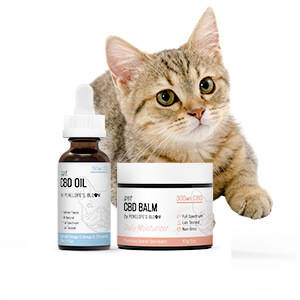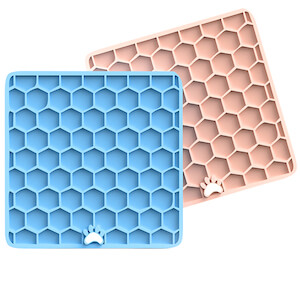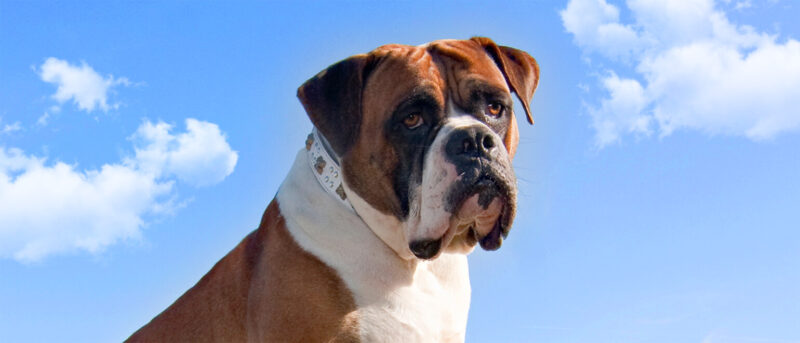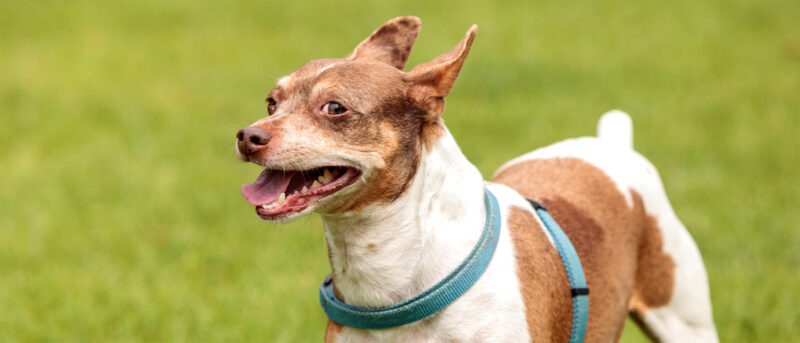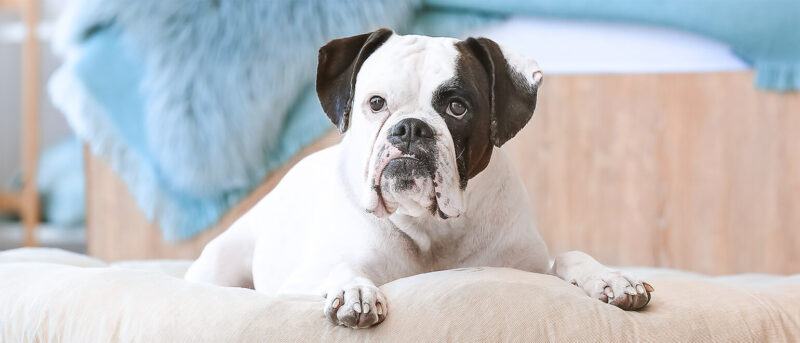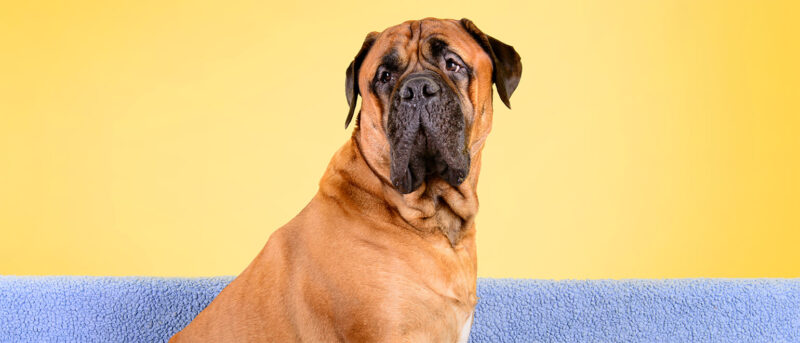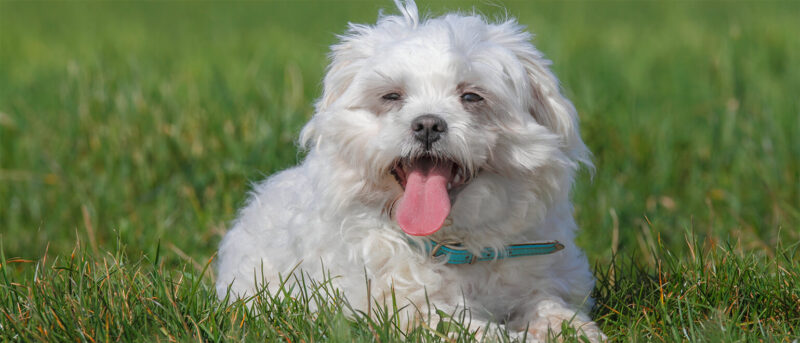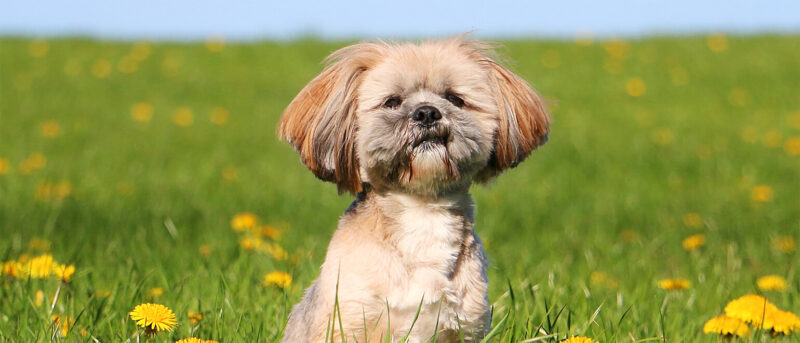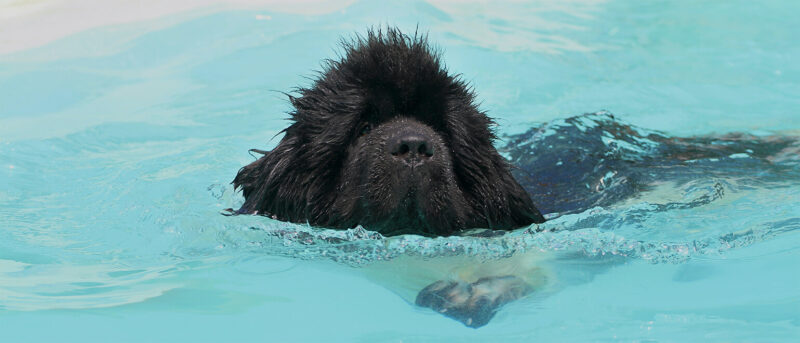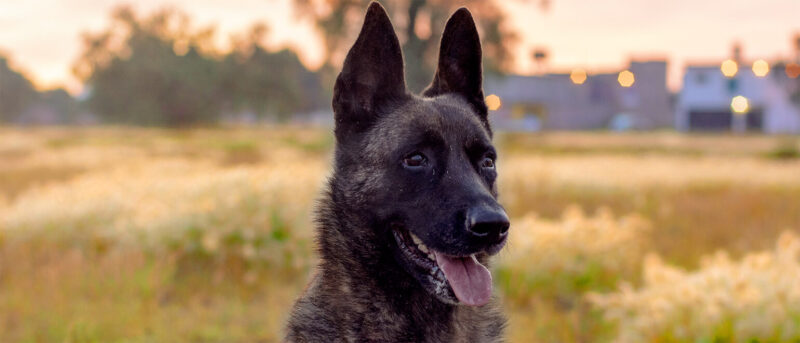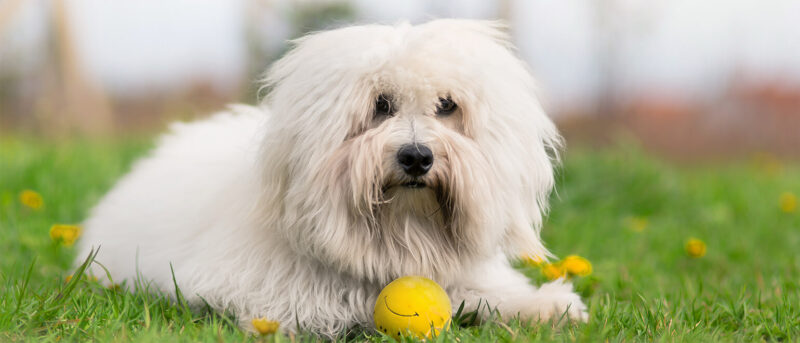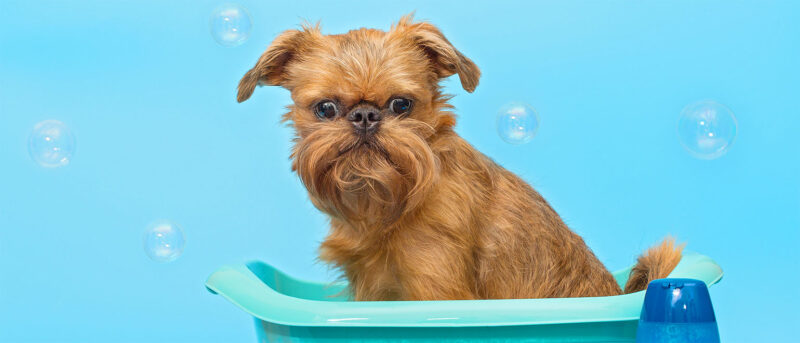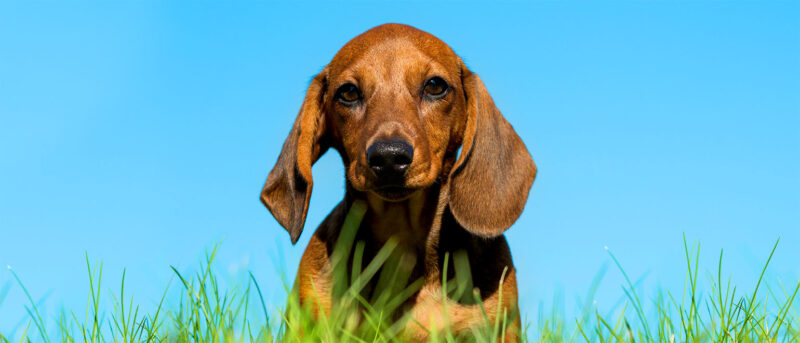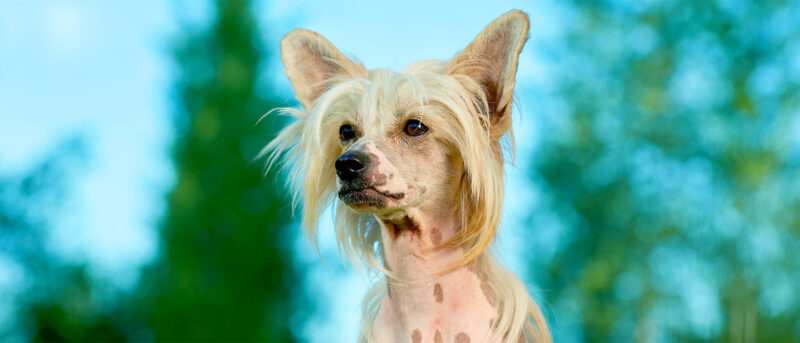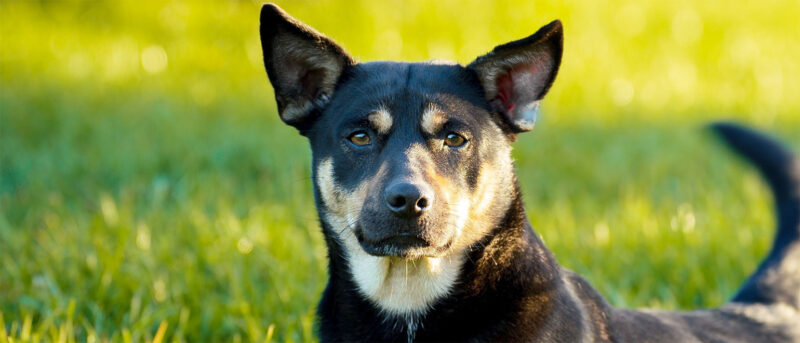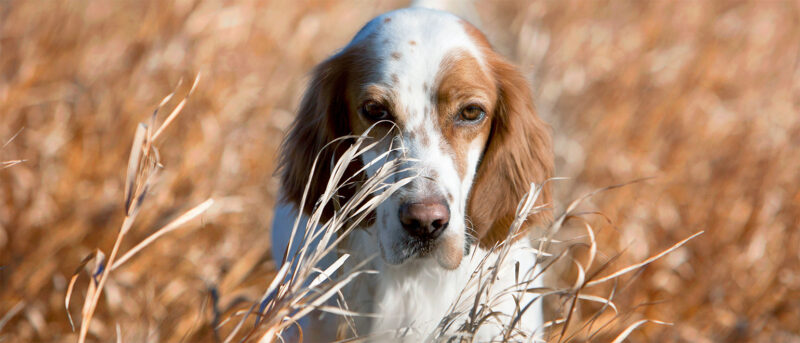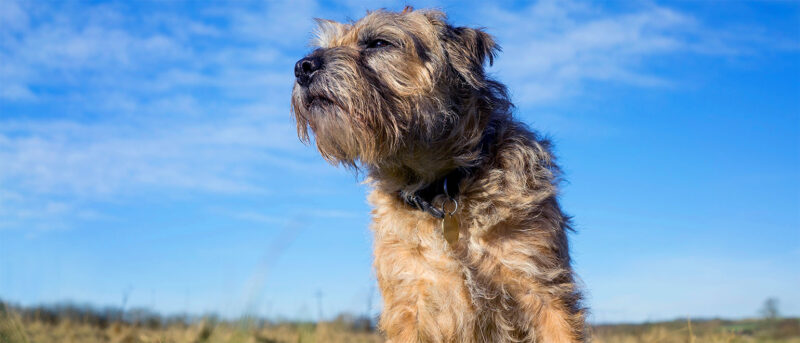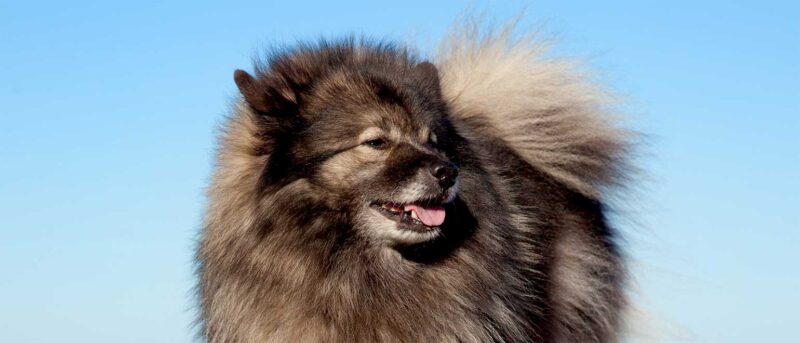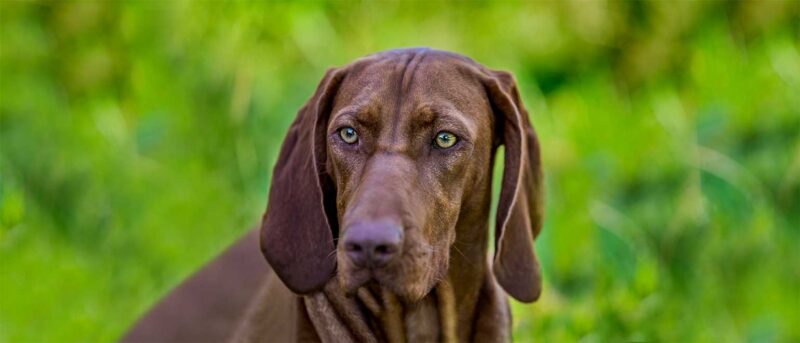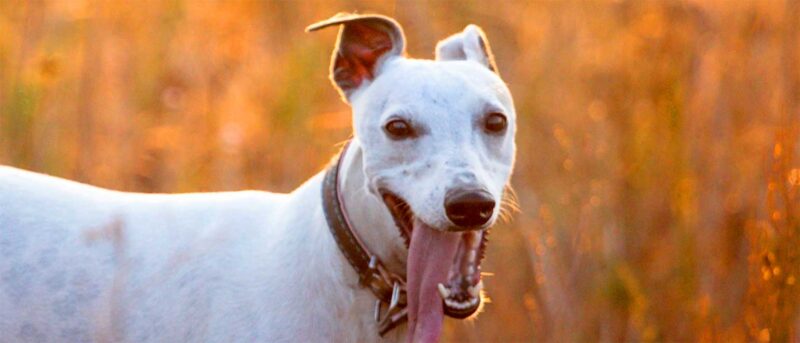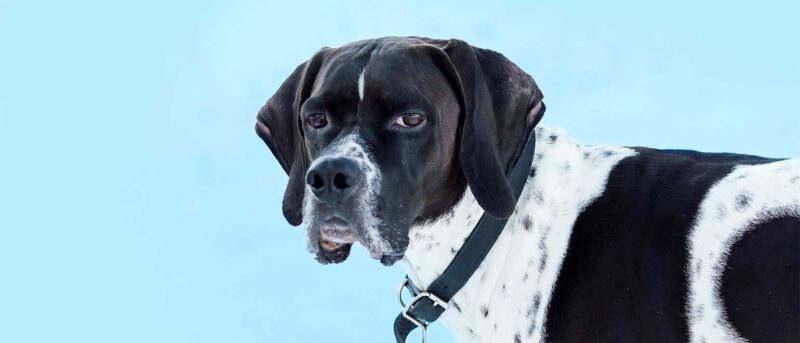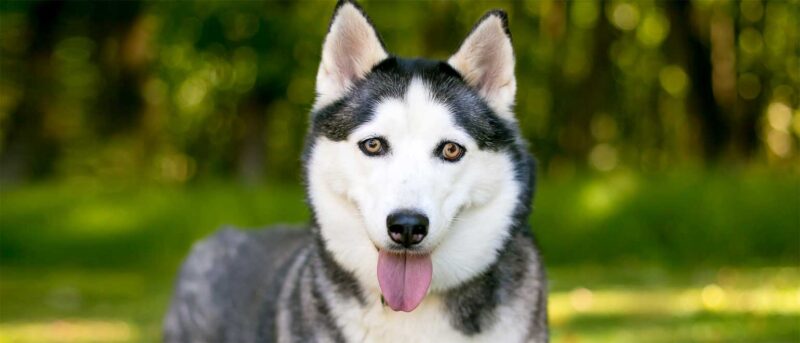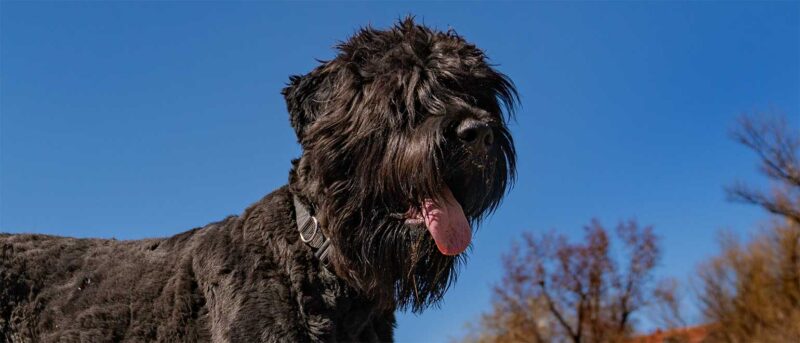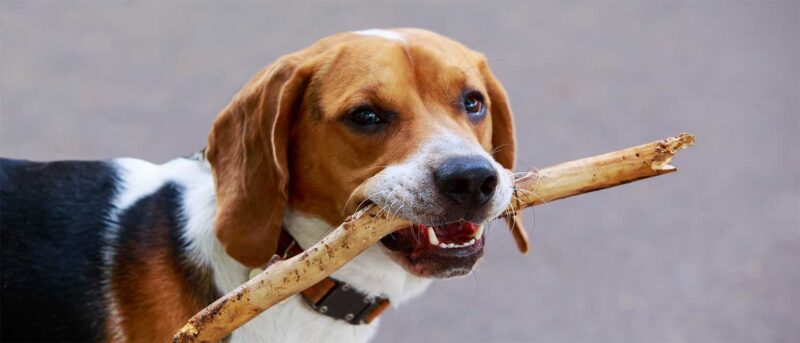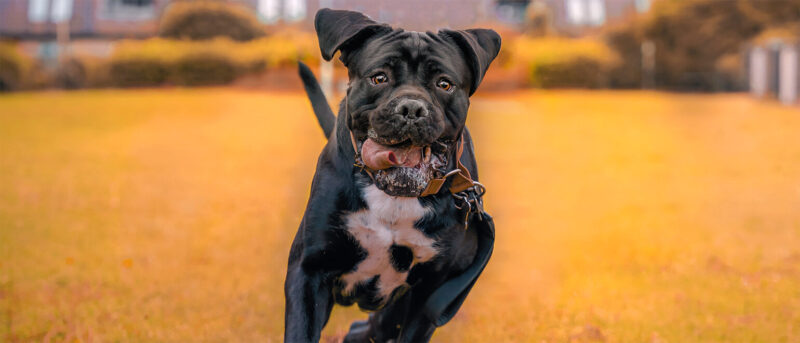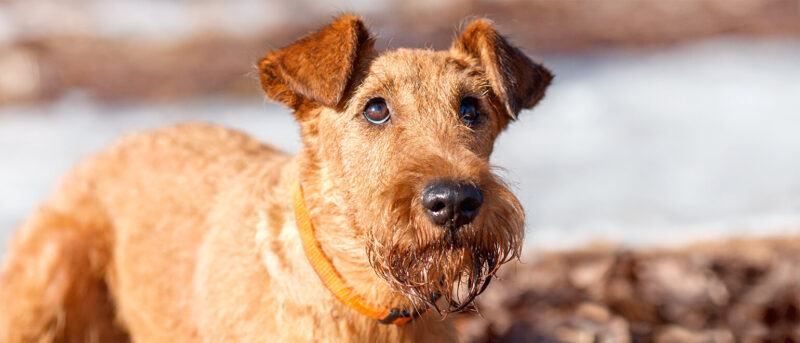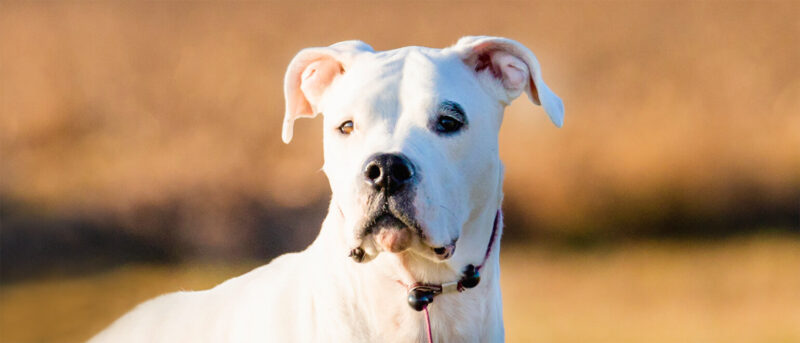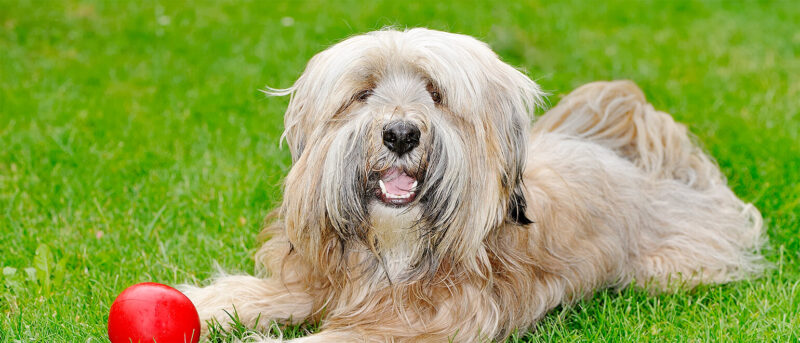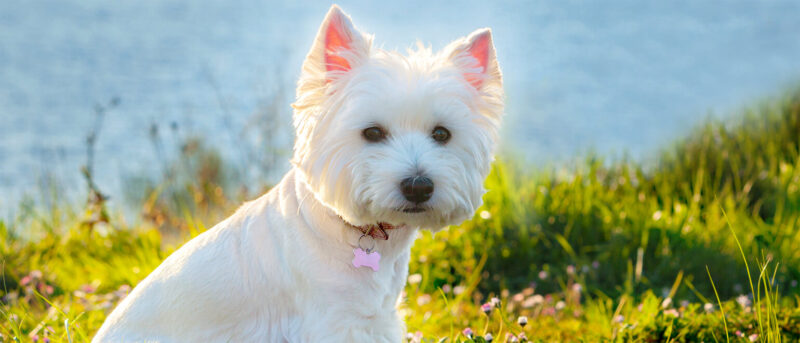American Akita — Why You Should Adopt! Breed Pics & Characteristics
The American Akita is a distinct breed that almost looks like a bear. With their independent and determined nature, these pups excel as watchdogs and guard dogs. Akitas have a long history as protectors, dating back to the 1600s, with American Akitas evolving into the largest of their kind. Although they were initially referred to […]
The American Akita is a distinct breed that almost looks like a bear. With their independent and determined nature, these pups excel as watchdogs and guard dogs. Akitas have a long history as protectors, dating back to the 1600s, with American Akitas evolving into the largest of their kind. Although they were initially referred to as “snow country dogs,” they eventually earned recognition as an official breed.
If you’re seeking a pup that is both a loyal companion and a dedicated protector, the Akita might just be your perfect match! This breed has a rich history and served as a fighting dog and hunting dog for hundreds of years in Japan. These dogs thrive under owners who can take a leadership position and appreciate the independent nature of this classic breed.
Join us and read below as we explore the remarkable world of the courageous Akita.
American Akita : Breed Traits & Characteristics
Known for its large size, this big-boned breed is much larger than the Japanese Akita, the Akita Inu. This formidable beast with a sturdy stance is a powerful Spitz breed. This dog features a solid muscular build with a short but lush double coat. Their skin, while pliant, is not loose.
Check out: CBD for Dogs
An Akita’s undercoat is dense and delicate, while their outer coat is straight, rough, and coarse. The length of their fur increases slightly along the lower parts of their neck, belly, and hindquarters. Their long hair is primarily concentrated on their fluffy tail.
The Akita has a slightly tapered muzzle, accentuated by a coal-black nose, thick jawline, and thin black lips. Their thick muscular necks are of medium length. With erect, triangular ears are catlike and appear relatively small in proportion to their head. Their small, dark brown eyes are striking and almond-shaped.
Typical of this breed is a broad and deep chest, imparting a sense of strength and resilience. Their long tails curl over and project straight back. When it comes to their legs, their front legs are firm and their back legs are strong and muscular with strong upper thighs.
This unique breed has dewclaws. Dewclaws are the small claws found on the inside of the dog’s leg, higher up than the other claws. Historically, dogs like the Akita would use these as a sort of ice pick to help them traverse across the frozen terrains. Their fluffy cat-like feet are also webbed, which helps them to distribute their weight more evenly, making walking on the snow easier.
Although Akitas were developed to make excellent working dogs with their large size and strong bodies, they also make great indoor dogs. They love to cuddle when bonded with their owner and they are very protective of their family and their territory.
American Akita Size
Woah! Akitas are one the biggest registered dog breeds. That’s a big pupper! Their size does vary with gender. Adult females typically weigh between 70 to 100 pounds and reach a height of 24 to 26 inches. In contrast, males typically weigh between 100 to 130 pounds and measure anywhere from 26 to 28 inches at the shoulder.
American Akita Personality
Even though the impressive Akita looks like it was made to weather the elements, they much prefer living indoors with their beloved families. The personality of the American Akita is courageous, dignified, and profoundly loyal. Their unwavering devotion to their owners makes them exceptional watchdogs.
Akitas make ideal guard dogs because they can be fearless, protective, and territorial. These traits also make American Akita very suspicious of strangers. Although they tend to be on guard, they are not yappy dogs. They only bark to warn you of incoming strangers and changes in environments. When you hear them become vocal, which sounds like a murmur or moan, it’s a good idea to check what they are barking at.
Some countries consider the Akita to be a dangerous breed because they won’t hesitate to confront or even bite a stranger if they feel threatened. Thankfully, Akitas can be trained to manage this instinct with proper training and socialization.
Unlike other dogs that growl, whine, show their teeth, or tuck their tail between their legs to show their emotional reactions, Akitas are not expressive. They will strike quickly and without any telling behavioral cues. With that in mind, Akita owners should accompany their dogs when strangers are present.
Dealing With an American Akita’s Personality
This fluffy dog tends to be less tolerant of strangers, so make sure to be present when your dog meets guests at your home. It may also be best for owners to post warning signs on their backyard fences or gates for this reason. You don’t want the mailman to get bit!
It’s important to help these working dogs expel their energy to prevent them from being antsy dogs. An under-exercised Akita may engage in destructive behaviors like tearing up things in their environment. This sensitive dog’s behavior will always mirror how they are treated. If they are properly cared for, trained, and given enough physical exercise, they will be well-behaved dogs.
If you’re considering adopting an American Akita, it may be best if you keep them as your only pet. Akitas are unfortunately prone to possessiveness and jealousy with other dogs. Unless they are given proper training and discipline, they can be selfish with their toys, food, and even their owner! As you can imagine, this breed’s personality type can sometimes lead to conflict with other pets in the home.
As a member of the family, the Akita flourishes when in the presence of its owner, enjoying both serene moments and engaging activities with their family. Taking them to snowy environments is a sure way to earn extra points, as Akitas generally thrive in colder climates. If you love winter or live in a snowy area, be sure to bring them on colder days for a wintry adventure!
Puppy Personality
Precious balls of fluff, Akita puppies are intelligent, brave, and loving. They may find strangers intimidating but they love their families and love to accompany their owners wherever they go. Puppyhood is when the Akita is at their most affectionate, so if you’re a fan of snuggling adorable puppies, you will love having an American Akita puppy.
As adults, the American Akitas can be territorial so it’s important to socialize your Akita puppy starting at a young age. You can help your pup grow into a more socialized adult dog by introducing them to children, friends, strangers, and other animals (like cats and other dog breeds).
As said before, puppy age is the best time to begin socializing your dog. Start by gradually introducing your puppy to your friends and their dogs individually, in controlled settings. Once your dog becomes more at ease with friends, you can start training them to be more receptive to strangers. Daily walks provide an excellent opportunity for this!
American Akita Exercise
Although Akitas were developed to be working dogs, they aren’t crazy balls of energy like Dalmatians or Jack Russell Terriers. That being said, daily exercise is still important. Without it, these dogs can become bored or overweight. These dogs enjoy free time in their yard, long walks on cooler days, and hikes with their owners.
Make sure there’s plenty of room wherever you intend to have playtime since Akitas require ample space. Given their sturdy size and weight, double-check your surroundings before playtime—they may inadvertently knock things like potted plants over while playing.
Need inspiration for a fun game or activity for your Akita? We suggest finding a game or having them learn a task that requires them to carry something in their mouth. Games like these appeal to their innate hunting nature and stimulate their minds.
As working dogs, Akitas generally get their fill of exercise while on the job. These jobs primarily include roles that utilize their guarding abilities.
Are you a hunter? The Akita is an ideal companion for both hunting and tracking. Following you on hunts can also serve as their fill of exercise for the day. If you want a more unique bonding activity, you can train them to pull a sleigh. Akitas make excellent sled dogs!
American Akita Training
As bossy as they are beautiful, the independent Akita breed can be particularly difficult to train. For certain individuals, this poses a fun and rewarding challenge.
Since they are intelligent and stubborn, these dogs require an owner who can be a strict disciplinarian. New dog owners who are unsure of how to train a dog should think twice before adopting this breed. We recommend newer owners seek out obedience classes for extra training help.
How Can I Make Training Easier?
Thankfully, we have some valuable tips to help make training successful for your Akita! It’s strongly recommended to begin training your Akita puppy from early on. This involves socialization to help acclimate them to interactions with other people and pets since they tend towards being less sociable animals.
Your Akita will most likely be easy to potty train. The best way to start potty training them is by rewarding them with tasty treats or soft chews.
You will also find that many Akita training guides recommend the strategic use of a dog training collar. Using these collars can accelerate learning for this breed, resulting in a well-behaved and obedient dog. Training your dog will give you peace of mind and minimize the risk of them being aggressive to others.
Most importantly, this breed needs training that is balanced with love and respect. Obedience training requires patience and persistence from the owner. Understand that reacting negatively or treating them harshly during training may result in them lashing out. Akitas respond best to positive reinforcement.
If you notice that your Akita is trying to guide you somewhere, let them. Most likely, they want to show you something that you may not have noticed. It’s important to know that any form of force or bullying aimed at your adult Akita dog is unacceptable and will result in them becoming aggressive.
Are They Aggressive?
The American Akita is bold, alert, and strong-willed. While they may exhibit distrust and aloofness towards strangers, their loyalty towards family is unmatched. This loyalty, however, will cause them to be more aggressive towards other dogs, particularly those of the same sex. Unless puppies are adopted together and socialized with each other as they mature, it’s generally advisable for Akitas to reside in single-dog households.
Can They Be Friendly?
Yes! Akitas are affectionate and loving towards their friends and family. When it comes to other animals, however, they usually just tolerate them at best. This natural inclination can be improved upon by socializing them at a young age. Since they were originally bred to be hunting dogs, Akitas usually want to keep their status as “top dog” in the household.
Do They Make Good Guard Dogs?
Absolutely! American Akitas make exceptional guard dogs! Training your Akita as a guard dog can sharpen their abilities and overall behavior. In feudal Japan, Japanese Akita dogs were so well regarded that they served as guardians for royalty and nobility. If you want a dog that will make a great guard dog for your home, consider adopting an Akita!
Can You Leave This Pet Alone?
Absolutely! Leaving your Akita at home alone is very possible, but it’s important to do so in moderation. Generally, they cope well with being alone and will eagerly await your return.
To help them acclimate to solo time, it’s best to begin training them from a young age. Crate training, especially during puppyhood, can be particularly beneficial in preventing separation anxiety.
Related: Calming CBD Chews for Dogs
American Akita History
Belonging to the Spitz breed family, the American Akita has a rich and multifaceted history, marked by specific breeding practices, controversial use, and their introduction to North America. Other breeds that contributed to the Akita’s development include the English Mastiff, Great Dane, Tosa Inu, and St. Bernard.
Akita Inu
The most similar breed to the American Akita is the Japanese Akita Inu. Akita Inus are famous for their fox-life faces and standing ears. Eternally regal, this breed was used to guard royalty in Japan in the 1600s.
Most recently these Japanese dogs were used as working dogs during World War II and in brutal fighting. Sadly, they were also killed for their beautiful coats.
Although many confuse the American Akita with the Akita Inu, the American Akita is a different breed. Contrary to popular belief, the American Akita is not a direct descendent of the Akita Inu.
American Akita
Did you know the history of the American Akita begins with the famous author, lecturer, and humanitarian, Helen Keller? She introduced the Akita to the United States when she imported hers from Japan in 1937.
Helen Keller came into contact with Akitas while touring Japan in 1937. She visited the Akita Prefecture and heard stories of Hachiko, the famous Akita dog. She was so impressed that she wanted an Akita dog of her own. A member of the Akita Area Police Department then gifted her a two-month-old Akita puppy named Kamikaze-go.
Sadly, Kamikaze-go passed away from canine distemper not long after arriving in the United States. After hearing of this tragedy, the Japanese Government sent his brother, Kenza-go, as an official present to Ms. Keller.
Keller wrote in her Akita Journal about Kamikaze-go:
“If ever there was an angel in fur, it was Kamikaze. I know I shall never feel quite the same tenderness for any other pet. The Akita dog has all the qualities that appeal to me — he is gentle, companionable, and trusty.”
The Akita’s Role in World War II
Many American men stationed in Japan during World War II soon shared Helen Keller’s fondness for the breed. They fell in love with the Akita and immediately began to bring them back to the States after the end of the war. This exporting of the Akita was also done to save the dogs from being casualties during the war.
As the breed gained popularity, many breeders started exporting more of the larger, Japanese Fighting Akitas to America. Initially, the ACA (American Canine Association) registered all Akita births. However, in February 1974, the ACA, along with its Stud Register, ceased operations. Since then, all Akitas born in the US have been registered with the AKC (American Kennel Club).
While both types of Akitas share a common ancestry, 50 years of breeding on opposite sides of the Pacific Ocean have resulted in significant differences between the two breeds. Recognizing these distinctions, the FCI General Assembly officially declared the “American Akita” as the new breed’s official name in January 2006.
American Akita Health Problems
The typical American Akita lifespan is around 12 to 15 years. For larger dogs, this is relatively long. While the Akita is generally a healthy breed, its small gene pool in the United States makes it more susceptible to various genetic and other diseases. Some of these include:
Eye Problems
Unfortunately, Akitas can be prone to Progressive Retinal Atrophy (PRA). This condition includes the progressive deterioration of photoreceptor cells in the eyes leading to potential blindness in affected dogs.
Hip Issues
As with many larger dogs, Akitas can also experience hip dysplasia. This common skeletal condition includes hip deformities that can affect mobility. This condition is usually hereditary and can cause painful wear and tear on the affected area.
Gland Issues
Located in dogs’ necks are glands that create the hormone, thyroxine, which controls their metabolism. When the gland doesn’t make enough of this hormone, the dog will experience Sebaceous adenitis (SA). Often affecting larger dogs, symptoms of this condition include hair loss, flaky skin, and sluggishness. When caught early, this health issue is treatable and inexpensive to deal with. It can cause larger problems if left untreated.
Renal Issues
Akitas can be prone to kidney issues such as renal dysplasia. This genetic health issue can start to affect Akitas when they are puppies. Early signs of this condition may include excessive water drinking, urinating, poor appetite, and unintended weight loss. As this condition progresses further, it may cause loose stool or throwing up.
Bloat
Commonly called bloat, Gastric Dilatation-Volvulus is a life-threatening condition for the Akita that rapidly progresses. Bloating occurs when a dog’s stomach becomes filled with fluid, gas, or food, causing it to uncomfortably expand. This expansion exerts pressure on other organs, leading to the trapping of blood in the stomach, which prevents it from reaching the heart and other areas.
Alarmingly, bloat may send your dog into shock, giving you only minutes to get to a vet. To educate yourself on this emergency health condition, we recommend owners watch a video of bloating occurring so you can know what signs to look for and how to immediately take action.
How to Care For an American Akita
The Akita may seem high maintenance but they are well worth the effort! Akitas typically exhibit excellent hygiene habits and take pride in grooming themselves. It’s important to consult your vet about what specific health concerns to monitor for in your Akita. Additionally, make sure to schedule regular check-ups to maintain their good health.
Taking care of an Akita also involves spending significant time with them. Akita owners must exhibit patience, affection, and firmness. These dogs enjoy being close to their human family, whether following you around the house or curling up beside you for a cozy movie night.
Since they can be unpredictable when agitated, it’s best to monitor your Akita dog when they are around other pets and strangers, even if they’ve been socialized and trained.
Nutrition and Feeding for American Akitas
This dog breed thrives on a balanced diet consisting of high-quality dry foods mixed with fresh foods. Adequate protein intake is crucial to sustain their robust physique. A good guideline is to provide approximately 1 gram of protein per pound of their body weight.
The amount of food you should feed your Akita depends on their level of physical activity. Regular weigh-ins at the vet can help determine whether you need to adjust the amount of food you give your pup.
Puppy Nutrition & Feeding
As Akita puppies mature into large dogs, it’s important to adjust their feeding regimen monthly to accommodate their growth. Start with smaller portions that you split into multiple feedings throughout the day. Feeding your puppy multiple times a day can help support their metabolism, energy levels, and overall development.
Below are some feeding suggestions for your growing puppy:
- Up to 200 grams per day for puppies up to 3 months old.
- 50 grams per day for puppies aged 4-5 months.
- Up to 400 grams per day for 6-month-old puppies.
- Up to 300 grams per day for puppies aged 7-8 months.
As your puppy grows, you can transition from feeding them 3-4 times a day to twice daily. However, we do recommend continuing to feed your pet puppy food until they reach at least one year of age. This ensures they continue to receive the added nutrients present in puppy chow, supporting their growth and development.
When selecting dog food for your Akita puppy, search for organic brands that provide lines tailored specifically for puppies. Puppy food tends to be higher in calories, which aids in supporting your pup’s growth. Additionally, it offers a broader spectrum of vitamins and minerals, promoting bone health and overall well-being for your dog.
Coat Color and Grooming
You have your choice of color when it comes to the American Akita. Currently, there are 5 markings and 9 different colors registered by the American Kennel Club: black, brindle, fawn, pinto, red, and white. The colors of Akita coats can vary when it comes to shades, combinations, and markings. Regardless of the specific shade, the color of their coats is rich, brilliant, and clear.
In contrast to the Japanese Akita, the American Akita typically has a black mask. This striking mask includes soft black fur that goes around their eyes and mouth. When it comes to pinto-colored Akitas, they generally have white fur with large dark patches of fur covering more than a third of their bodies.
Despite being one big fluffy dog, Akitas are actually very easy to groom. Similar to cats, this dog instinctively grooms and maintains their neat appearance. All of this grooming does not lessen the amount they shed so you may find yourself vacuuming much more after adopting an Akita. To help manage the amount of fur they shed, we recommend you groom your Akita a few times a week. This also helps to support proper oil distribution in their fur. Additionally, plan on washing them a few times per month and trimming their toenails monthly.
Are They Hypoallergenic?
No, American Akitas are not hypoallergenic dogs. They are a very fluffy dog breed and are likely to trigger a reaction in anyone with a dog allergy.
Children and Other Pets
Socialized American Akitas can get along well with dogs of the opposite sex but typically have more trouble with dogs of the same sex. As they have a strong instinct to chase and hunt prey, you should keep them away from smaller pets like cats.
Although they may adapt to sharing their home with others after advanced training, it is generally not a good idea to put them in a multi-pet home. If you’d prefer to have two dogs, the best option would be to get one female and one male Akita.
Large and strong, American Akitas can accidentally injure small children. Children should always be monitored when interacting with an Akita out of precaution.
Training, positive reinforcement,and CBD oil for dogs may help your dog to relax when they are feeling stressed by social situations.
Rescue Groups
If you’re ready to bring an adorable Akita into your life, we recommend you check out some rescue groups first! Any of these wonderful organizations can help you to find your four-legged best friend:
- Namaste American Akita — located in sunny California.
- TikiHut Akita Rescue Association — located in Northern California.
- Midwest Akita Rescue Society — Serves Illinois, Indiana, Iowa, Michigan, Minnesota, Missouri, Wisconsin, Ohio, and parts of Kentucky and Kansas.
- Rakki-Inu Akita Rescue — Serves North Carolina, South Carolina, and Virginia.
- Big East Akita Rescue — located in New Jersey, New York, and Pennsylvania.
Breed Organizations
Even before this dog breed received its official classification, it had many dedicated organizations helping dog enthusiasts learn more about this legendary breed. The Japanese Kennel Club did eventually classify the American Akita breed. The JKC is also responsible for submitting the formal proposal to FCI for an official breed split between the Japanese and American Akita dog breeds.
To learn more about the history of the fabulous Akita breeds, check out these important breed organizations, including the Akita Club of America — the only National Akita Breed Club:
Similar Breeds
Although the American Kennel Club officially recognized the American Akita as a distinct breed in 1972, they are often mistaken or confused for other breeds. While these other breeds are very different in temperament, they do share similar physical traits to the American Akita.
Here are some fascinating facts about breeds that share similarities with American Akitas:
- Samoyed: Samoyeds are another cold-weather-loving dog breed that has been around for hundreds of years. Known for their positive disposition, their trademark smile keeps them from drooling.
- Siberian Husky: Siberian Huskies are a working dog breed just like the Japanese Akita Inu! The Chukchi people used them as sled dogs in Siberia, where they were critical for human survival.
- Alaskan Malamute: Did you know that Alaskan Malamutes are descended from wild wolves? This Spitz breed likes to run in packs, is very playful, and thrives in homes that allow a lot of outdoor time.
- Shiba Inu: Though both look similar and share Japanese heritage, the Shiba Inu is smaller than the Akita. This breed has been around since 7000 B.C., making them one of the oldest breeds of hunting dogs in the world.
- Finnish Spitz: The Finnish Spitz hails from Finland and was originally bred to hunt a variety of animals including squirrels and bears. Its appearance is similar to a fox, and they are known for barking.
More About Akita Dog Breed
Currently, the American Akita ranks 47th for the most popular purebred breed in the United States. Despite its long history of being bred to work as a guard dog, this dog breed makes an exceptional friend and loyal companion.



